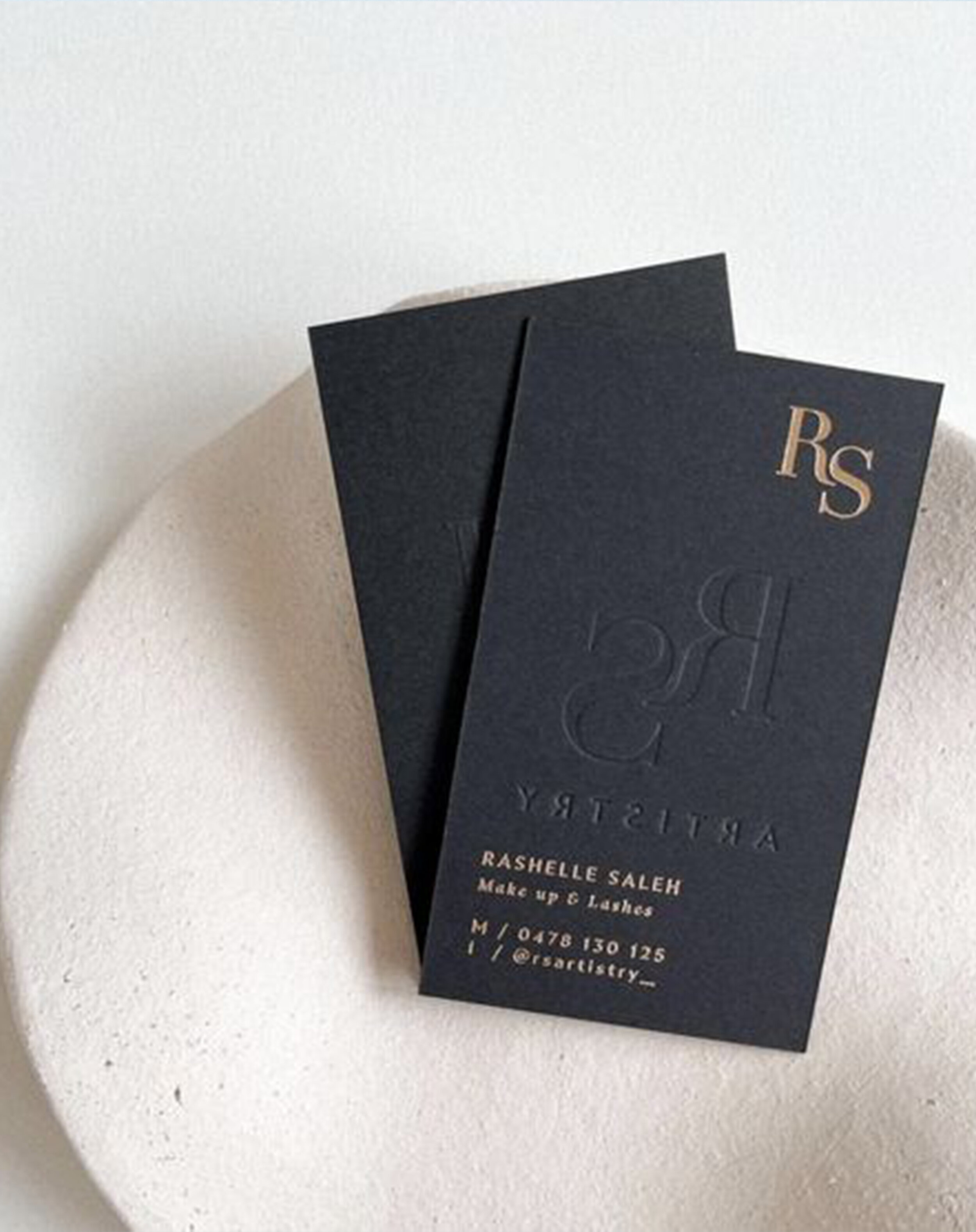5 Ways to Make Your Business Card Stand Out
In a sea of business cards, it can be challenging to make sure yours stands out. First impressions are important, not only for people but for your business too. They say don’t judge a book by its cover, but it’s an undeniable fact that people will judge your business based on the card you hand out, especially if it’s their first encounter with your company. Additionally, it’s even harder to ensure that your card becomes a keep-worthy item in your customer’s purse or wallet. With the help of the professionals here at SUN, we’ve put together a list of ways you can transform your business card from plain to powerful and help it avoid the trash can.
1. Try a vertical orientation
Switch things up by adjusting the orientation of your business card. The majority of business cards read horizontally, so trying something less conventional is a sure way to make people do a double-take. Unlike square or other oddly shaped business cards, vertical cards still use standard dimensions, which guarantees they’ll fit perfectly inside someone’s wallet! While switching orientation can be a great way to give your business card a fresh new look, it’s important to make sure that the artwork and information on the card fit nicely in the vertical area without looking cramped or awkward. Additionally, your industry type and customer base are important factors that should be considered; creative fields may be more accepting of a vertical orientation than traditional ones.
2. Select a sturdier or textured Paper
Don’t underestimate the sense of touch. Simply adding an interesting feel to your business card is an effective way to grab someone’s attention. Printing your business card on a thicker stock not only enhances its durability but also increases its tactile advantage. Here at SUN, our standard business cards are typically printed on 100lb (12pt) card stock. Boosting the paperweight up to 120lb (15pt) or 130lb (16pt) can make a substantial difference in sturdiness. Another way to increase the tactile advantage of your business card is to use a textured stock. Some of our favorite textured paper choices include cotton, laid, linen, and felt.
3. Consider Ultraviolet (UV) Coating
Ultraviolet (UV) coating is a process in which a clear liquid material is applied over the top of a printed product. This material is then exposed to UV light and hardens, leaving a smooth and glossy finish. UV coating is a great way to add an eye-catching luster to your business card. Additionally, UV coating creates an extra layer of protection; it’ll make your card less likely to scratch, fold, or tear, or even fade. This protective layer extends the life of your product, meaning you and your customer can hold onto it longer, which is a win in our book. We should mention that UV coating typically increases the cost of your business cards, so you’ll have to consider whether the positive benefits are worth the tradeoff for your extra dollar.
4. Opt for round corners or a notch
Add a little extra character to your business card by getting it round cornered or notched. Round cornering gets rid of those hard edges, giving your business card a sleek and more sophisticated feel. Additionally, round cornering increases the durability of the card as it will be less likely to fold or dent around the edges. Here at SUN, customers typically opt to round off all 4 corners, but for a more unique look, we can do 1, 2, or even 3 of the corners. Notching, on the other hand, cuts out small divots in the side(s) of your business card. Notches can come in all shapes and sizes, but on business cards, round or triangular notches tend to be most popular. As with round cornering, it’s possible to do one or multiple notches.
5. Add an emboss or foil stamp
Lastly, embossing or foil stamping your business card can make a huge impact on its attractiveness to the human eye. The process of embossing uses a heated metal stamp to press a custom image into the surface of the product. Foil stamping does virtually the same thing but adds colored foil to the image area. These processes are best used on single-sided business cards as the stamped area will appear in reverse on the backside of the card. If you’d like to add an emboss or foil stamp to a two-sided business card, you should keep the stamped area in mind as you design the artwork for the backside. While these extras bring big impact, with big impact comes big costs. Embossing and foil stamping can substantially increase the price of your business cards, so you should keep this in mind as you consider these options.
There you have it, 5 easy ways to enhance the appearance of your business card. Have a comment or suggestion related to this topic? Leave it below.





